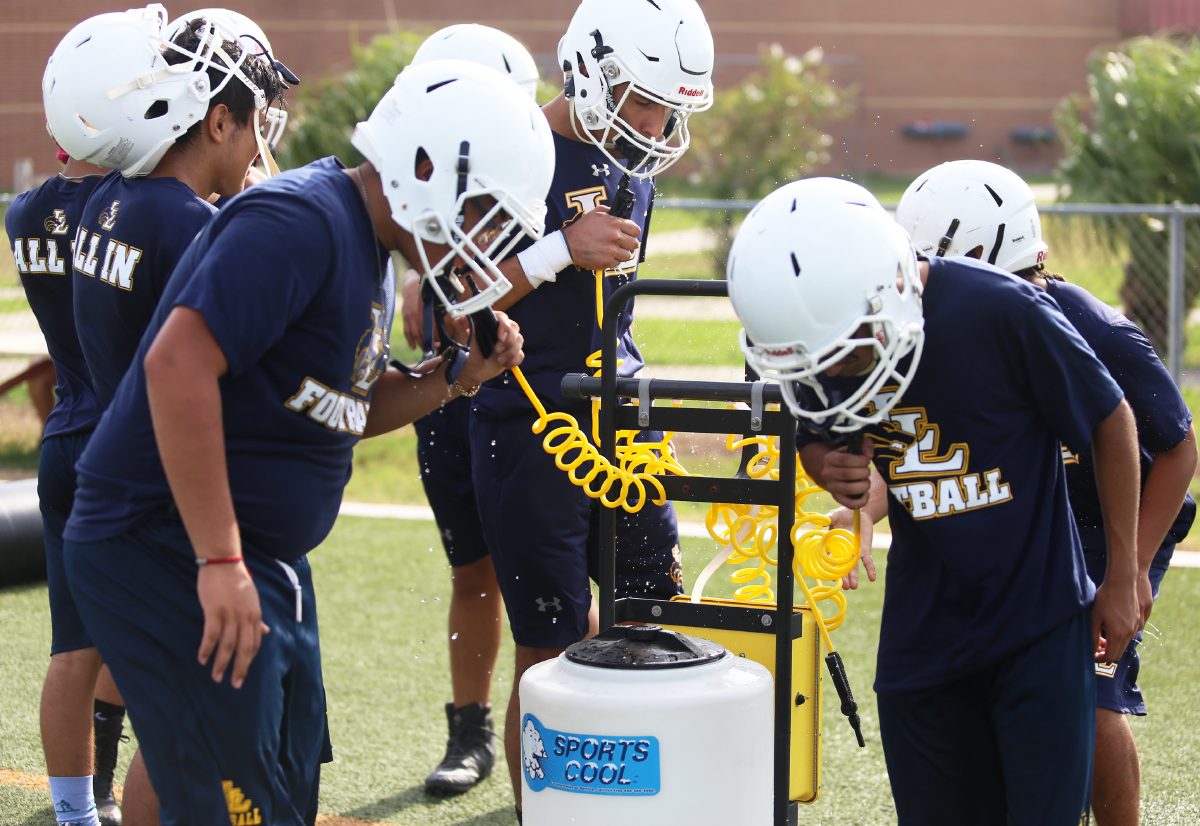The dog days of summer are here and will probably stay around for a while.
According to the National Weather Service in Brownsville, Rio Grande Valley residents will be experiencing “feels like” temperatures of at least 111 degrees until the middle of next week.
The reason behind these hot temperatures is known as “La Canicula,” which is a dome of high pressure that provides “hot to very hot, largely rain-free, and frequently breezy weather to the Valley and Deep S. Texas,” according to Barry Goldsmith, warning coordination meteorologist/acting meteorologist–in-charge at the NWS Brownsville.
Although the actual calendar for “La Canicula” is July 3 through Aug. 11, the periods can last longer and that appears to be the case for the heat to last deep into August, Goldsmith said.
The high temperatures will most likely prompt the NWS to issue heat advisories for a number of days through the weekend and possibly beyond.
The daytime temperatures will reach in the triple digits with the “feels like” temperatures at 111 degrees or possibly higher. These “feels like” temperatures will occur from about 1 to 6 p.m.
Tim Speece, lead forecaster for the NWS, said there doesn’t appear to be any relief from the hot temperatures anytime soon. The high temperatures are expected to continue toward the end of July or early August.
“Our 6- to 10-, 8- to 14-day outlooks unfortunately don’t show much difference heading into at least through Aug. 20. It keeps us above normal temperatures and below normal rainfall, so pretty much hot and dry. We are probably going to spend the next two weeks in this pattern,” Speece said. “People are going to have to continue to exercise the heat (safety measures).”
The Valley began experiencing the extreme heat heading in to June, which is earlier than it did last year, Speece said.
“There was a stretch in early June (of this year), June 7 through June 9, where we were reaching and exceeding 100-degree temperatures then,” Speece said. “…as a comparison this is worse that last year’s.”
The five-day outlook for the Valley states: “No let up in the heat through the weekend as high pressure becomes centered over Texas. Most areas will see temperatures exceed 100 degrees with mid to upper 90s covering the coastal counties. Heat indices to exceed 110 degrees for several locations and may approach 113 degrees for a few hours each afternoon. Breezy Southeast winds for the rest of the work week with a moderate breeze this weekend.”
There is no chance of rain over the next six days.
The NWS on Wednesday issued a special weather statement for the RGV alerting residents to prepare for extreme heat index values.
With these high temperatures in the forecast, health officials are warning residents to be aware of what type of affect these high heat indices can have on their bodies.
Dr. Christopher Romero, physician adviser at Valley Baptist Medical Center-Harlingen, said residents should monitor how they feel as they spend time outdoors. He said a heatstroke is especially dangerous because if left untreated it could lead to other health complications or death.
“Some of the signs (of a heat stroke) are dizziness, weakness, confusion, nausea and vomiting. Patients may develop a high heart rate, begin breathing fast, and have low blood pressure. Depending on the patient and their health conditions they may have increased sweating and appear red or flushed; however some patients will become pale and have dry skin with heatstroke. Depending on how much water someone has been drinking they may or may not notice they are urinating less than normal,” he said. “An elevated temperature or fever is a major red flag. If someone has been exposed to the heat and develops these symptoms it is important to seek medical care right away.”
Officials said residents who have outdoor activities planned are urged to remain hydrated by drinking plenty of water, wear light weight and light colored clothing, and take frequent breaks.
Parents and pet owners are reminded to never leave children or pets unattended in vehicles at any time.
“This is especially true during warm or hot weather when car interiors can reach lethal temperatures in a matter of minutes,” the NWS reports.
Speece advised that families constantly check on elderly relatives who live by themselves to make sure they remain hydrated and refrain from doing any outside activities during the hottest parts of the day.







